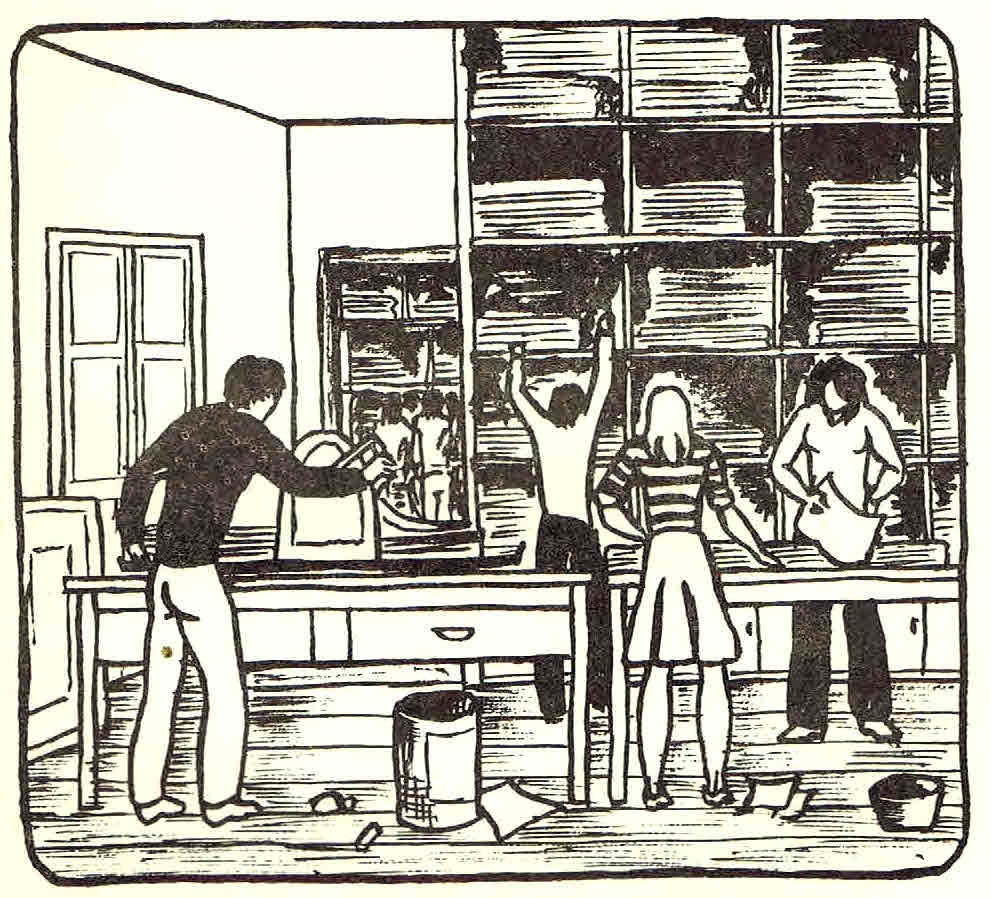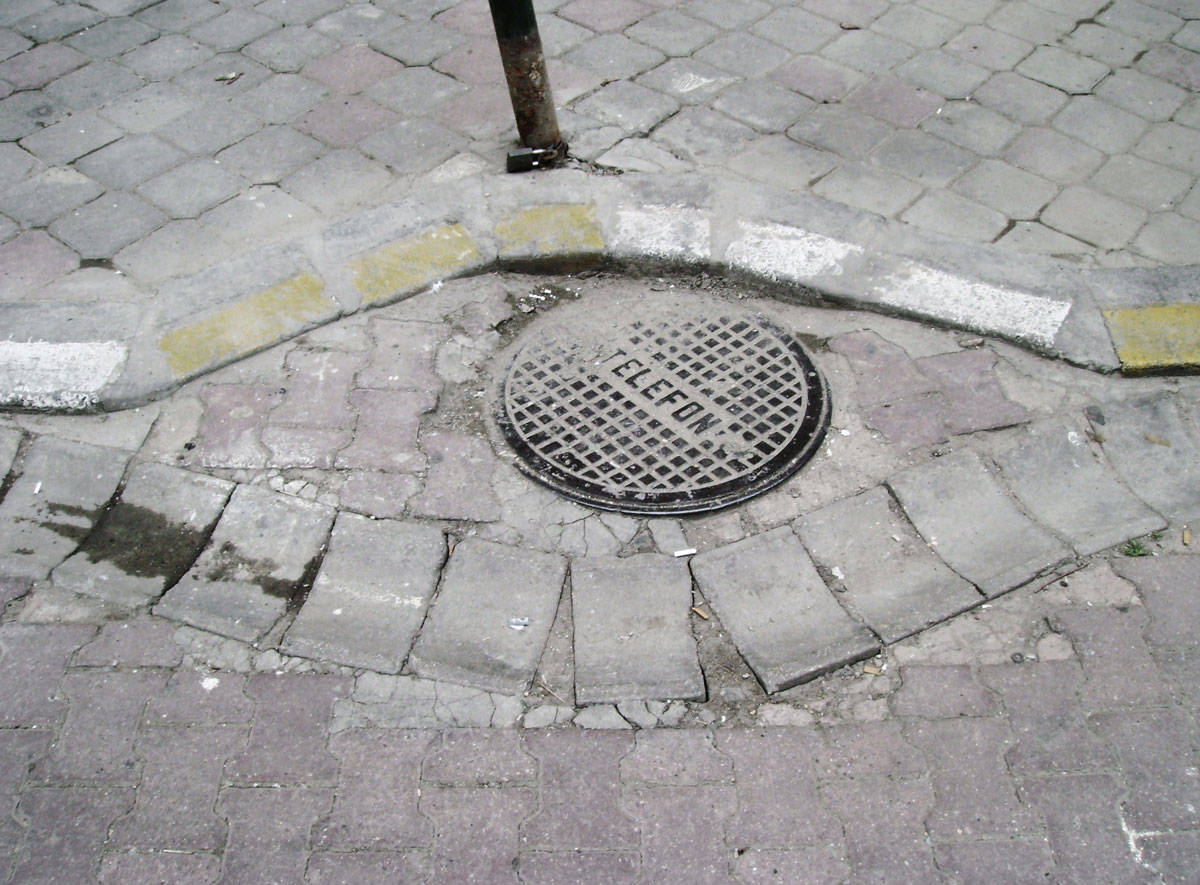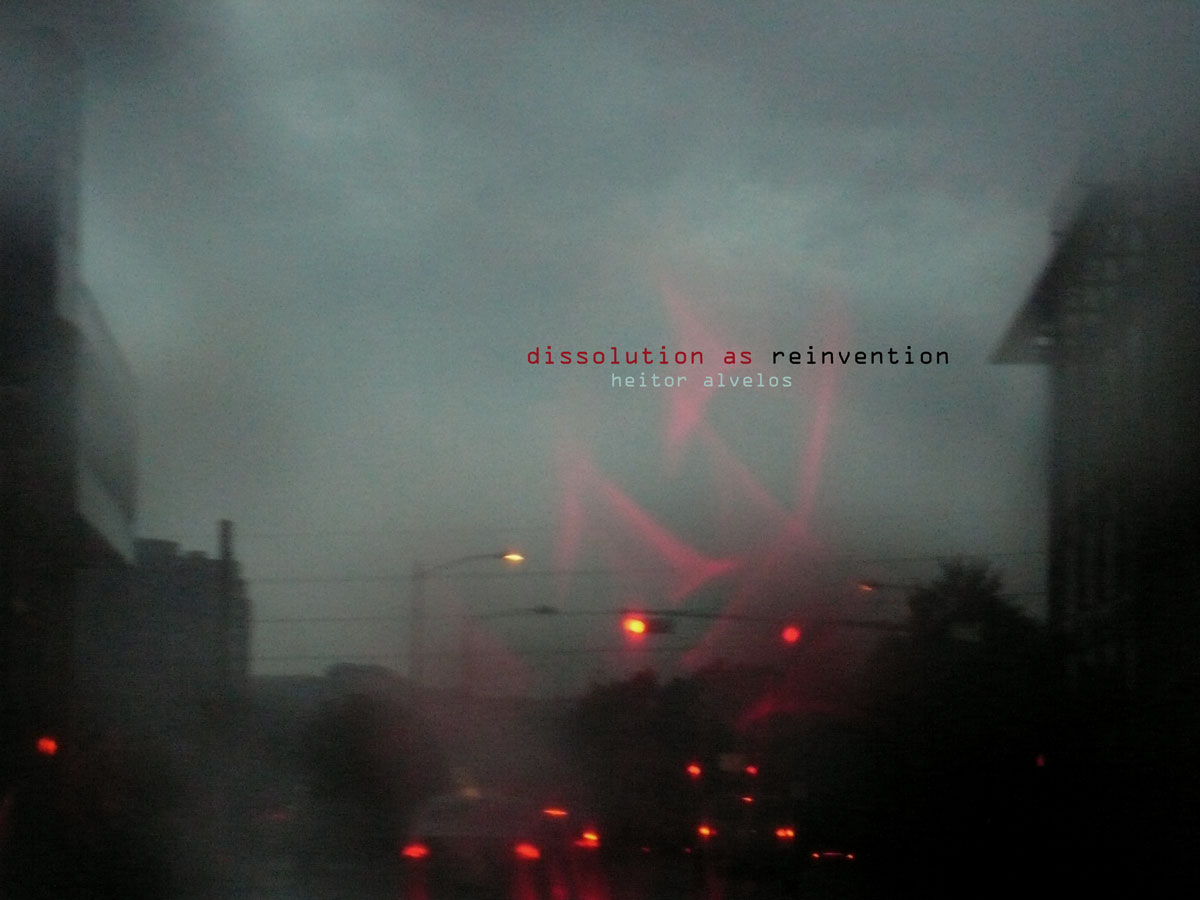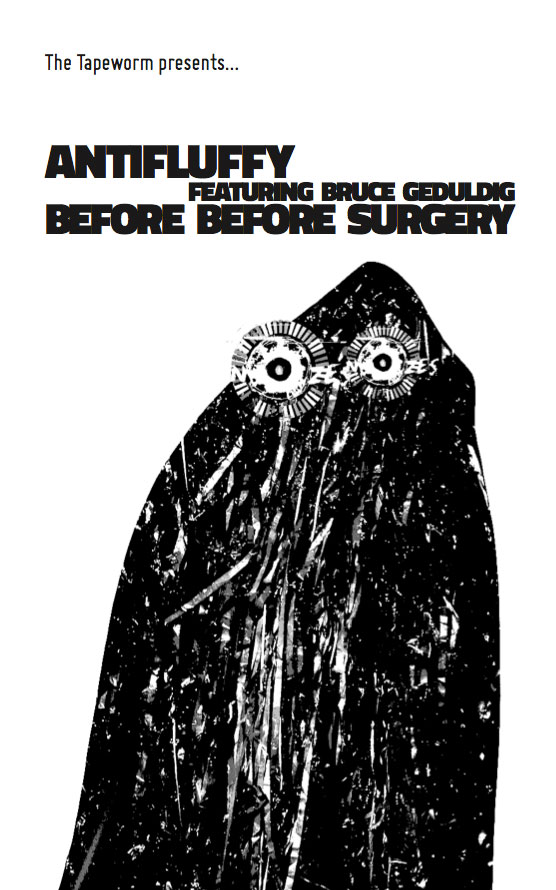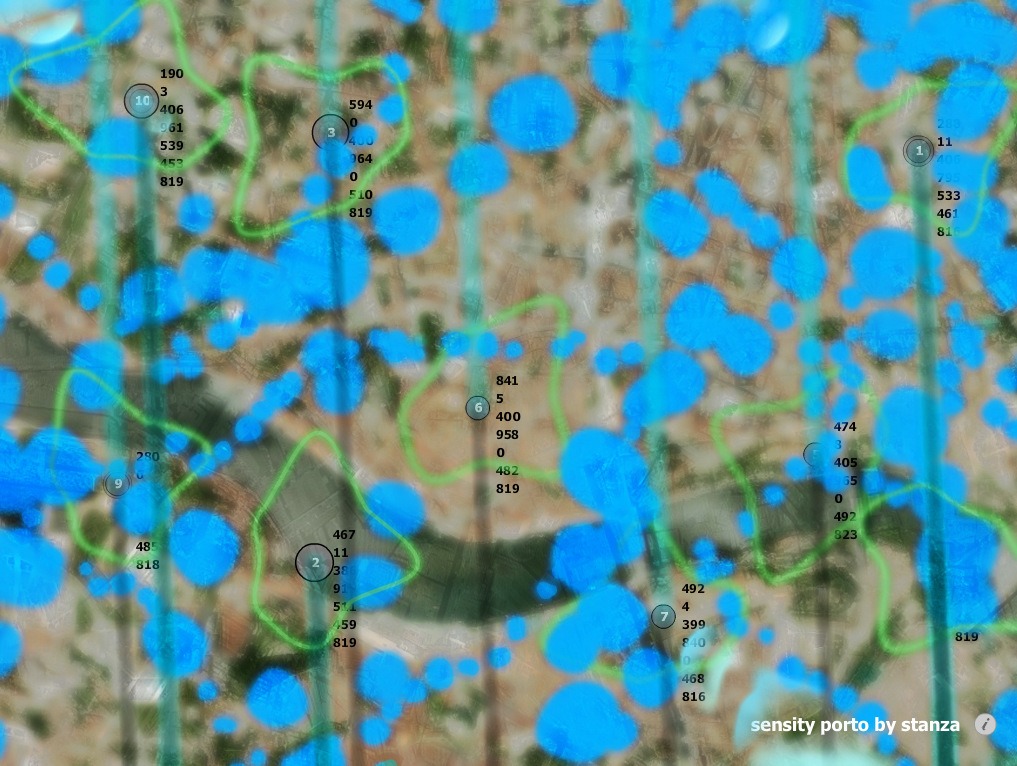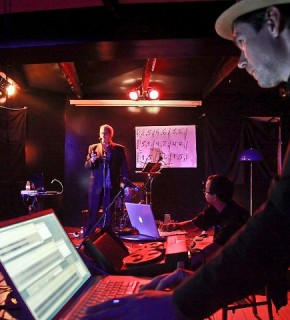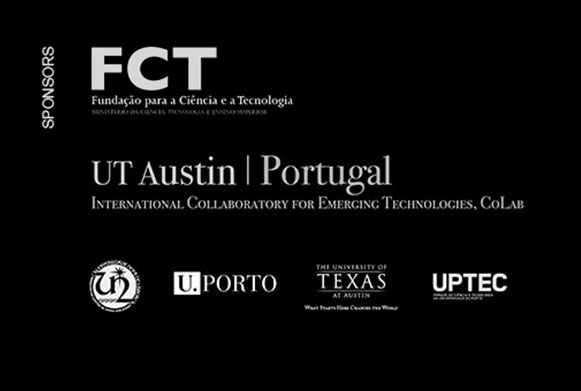by Anselmo Canha and Heitor Alvelos
Stop Shopping Center (CCStop) opened in Porto in the early 1980´s, and soon turned out to be a commercial flop. From the mid-1990´s onwards, its empty shops have gradually been taken over by music bands; nowadays, the daily life of this shopping mall is filled with the activity of hundreds of musicians.
This phenomenon displays a vital impulse, shared by hundreds of people, and attests to a complex array of resources, in the fields of performance, music and image-making. In the activity of these musicians-researchers, through the relation they establish between musical legacies, their repertoires and music communities (ie. between a History, a practice and a social involvement) we can recognize past and future processes of transformation through de-re-codification of individual and collective expression: we observe the recycling process of a whole culture. As if demanding our attention to its territory, the building itself offers an analogous process in its relation to the city: the building is urban heritage as well, it is and was practice (first commercial, now musical), and weaves those ingredients in a constantly evolving social evolution.
1. CCStop. The Mall of Music.
CCStop was part of a surge of shopping malls that took place in the early 1980s. This phenomenon coincided with the gravitation of Portuguese society towards the European Economic Community, and what it brought in terms of prosperity and openness to the World. Musically, both of these phenomena coincide with the often-called Boom of Portuguese Rock.
The building that now hosts the bands was, before 1982, a garage/showroom of a renowned car brand (incidentally: “Austin”!). The financial difficulties felt by the garage´s proprietors were at the forefront of the reasons for its transformation into a shopping mall. This decision may have been heavily influenced by the then maverick success of Brasília Shopping (CCBrasília), as well as the garage´s location, near the Eastern arteries of access to the city. To the best of our knowledge, it would have been this context (intuitively taken as a certainty) that would have persuaded the shop owners to invest on one of the 147 units of CCStop. Yet the outcome was far from the expected one: rather than having the passers-by stop for a visit, CCstop was overtaken by its social surroundings – it began reflecting the multiple yearnings of the Eastern sector of the city. The humble population that surrounds CCStop projected onto it their conflict between the ambition of reproducing the order and prosperity they witnessed from afar, and a certain rebellious rehearsal of templates of modernity, mainly embodied by local youth gangs, who quickly took over the mall. The stalling of CCStop occurred largely because of this struggle.
Nowadays, the general air of abandonment that permeates the Shopping Center matches perfectly with the surroundings. In this urban area the conservation of houses is precarious, prostitution abounds, and the standard of living is generally low. At CCStop, the few active shops not related to music seem to cater to the ladies of the neighborhood, with arrays of clothes, sale of perfumes and beauty treatments. On Thursday nights, or Saturday afternoons, these same ladies will accompany their husbands for ballroom dancing at Porto à Noite danceteria, on the roof of the building. On the other hand, nearby residents complain about the odd session of punk-rock coming out of a rehearsal room. But ultimately there are few signs of animosity towards this context and the musical community that flourishes within.
In parallel with the booming of shopping malls, economic prosperity and Portuguese Rock, traditional musical practices changed, and with them their traditional contexts of operation. Local associations and Firemen headquarters were then the venues for Portuguese Rolling Stones cover bands and the like; these then gave way to sports arenas, where Portuguese Rock bands began claiming their semantic space and aesthetic originality – and they also gave way to shopping malls as places where music communities began to socialize.
On the other hand, if the new economic political and context gave access to information and instruments to a wider number of musicians, the bankruptcy of shopping malls offered them rehearsal space. The means of musical production thus became more accessible, and it was at CCStop that this factor became more expressive. In 2008, 77 music-related units were identified.
This whole buzz derives from a growing access to information and sociability, to music production and consumption, and it closely precedes a second wave brought by digital media and the internet. Today, the outcomes do not necessarily correspond to the new protagonists´ original aims. Yet we observe individual initiative and enthusiasm, submitted to the subtle structures of the new contexts where it is now produced and consumed. Let us take a closer look:
The CCStop building is the technical apparatus that determines the shape of this musical community. Its public areas hide the outside, and turn upon themselves in circular motions, a one-exit labyrinth. The former shops are now the intimate territory of a single band each, or the hinge of projects that are born, cross-polinate, evolve and disappear. In either case, its inhabitants perform the same ritual of customization and isolation, drawing a clear line between the common areas and the private spaces. As a result, we face a maze of seemingly abandoned shops, while, during busy times, with musicians working in their “cells”, the corridors become casual borderlines – akin to the “ilhas” of Porto, semi-private communities where one feels as if trespassing when crossing their narrow ways.
Inside the rooms at CCStop, each project develops a bidirectional impulse of individual expression and socialization. The joy of musical experimentation in the rehearsal room raises the possibility of public expression, while the exterior social context shields the territory in which the project may be interpreted: in this way, it shapes the limits and the sense of the musical experiments. What was witnessed within the bands was the supremacy of globalised musical formats, that shape the inside of these rooms, through an array of symbols that override any ambition of subversive, original experimentation of this same semantic context. As a consequence, projects are born submissive, through its legitimate fate and the experience of public and private sharing. Suddenly, the original impulse is betrayed by its own resolution.
From CCStop outwards, each band attempts to find its own circle of visibility. Most bands can be seen playing live at local bars, assigned according to aesthetics and audiences. There is, however, a common thread: the “traditional” gig tends to become a backdrop, a casual pastime, mere curiosity. The format of the spaces, stage and lights enhancing the musicians, is in direct contrast with the audience´s relative indifference. On MySpace, this indifference can be witnessed yet again: the bands remain drowned in an ocean of music projects, hopeful that some viral phenomenon, unlikely and unexpected, will trigger their success. Could physical, virtual and symbolic space, fragmented by walls and categories, be responsible for the perpetuation of these cells, defining the invisibility and lack of breadth of what is produced?
How can CCStop overcome these patterns and contribute to a communal role to music that evades the above logic and owns up to its original, ritualistic and tangible essence?
2. The idea of change
Just as CCStop is a poor variation of the architectural and commercial abstraction that is the shopping mall, developed out of sheer faith in financial success, so the formulas of Rock music are mimicked according to a fixed blueprint, a stereotype embraced in an attempt to make up for the need for self-expression and socialization. As far as media and commerce go, the fact that this blueprint replaces a wealth of authentic creativity is irrelevant. Yet, if there was to be a blueprint, it would be that of individual research bridging with local, specific contexts, weaving culture and creativity where it already is present.
The occupation of CCStop by a great number of bands is a great example of the above. At the same time as a pervasive hyper-rational social and cultural construction revealed its own bankruptcy in this particular shopping mall, individual initiative on the part of the musicians gave it a new use. The lack of success became a blank page and enabled development. Collectively, musicians acted economically, politically and strategically in ways more effective than any institutional decision. And, regardless of styles or trends, the loose, spontaneous and anonymous enjoyment of music happens at the shopping mall on a daily basis, and it gathers symbolic weight when it comes to the desire – and the ability – to change. Although the musical output survives on the border of submissiveness, the daily experience finds its possibilities for freedom in anonymity and privacy. The dedication, the ability for self-regulation, and the talent, offer themselves as available resources and energy.
What is at stake here is the awareness that musicians may have of the effects of their practice in a process where creative production has become a market place, and the market place has become the quasi-exclusive mediator of culture. These effects revert towards themselves. To the musician, rebelliousness is enacted in a context of submission. To the industry, the formats that make up its rational efficiency strangulate the possibilities of innovation in production. In the community, the formalities, significations and virtual conventions replace a deeper ritual sphere. We face the challenge of resolving the paradox of social relation turned market relation.
3. START!
The research into CCStop is paralleled by a growing willingness to transform it. Initially regarded as an opportunity to extract social, cultural, conceptual and methodological knowledge from the universe of focus, this willingness became gradually more present as the research itself gradually confirmed the potential at stake. Thus the added proximity to the subject of study, and the deep knowledge developed throughout, gave the ideal ground upon which actual endeavors could be rehearsed and consolidated: the musicians´ trust, consolidated throughout the participant research, meant they were generally receptive to the possibility of developing joint endeavors, suggested through a series of informal meetings.
The stated aim was the external visibility that music projects housed at CCStop could benefit from, through the creation of a loose internal network. The underlying logic was that, as a collective, CCStop was a larger entity, and therefore more readily acknowledged by outside agents and spectators. However, a second aim was present: the strengthening of internal ties among the musicians. An aim that, it was hoped, would be accomplished through the regularity of said informal meetings, and subsequently through the musicians´ participation in proposed group actions.
START! was born out of an opportunity to integrate the international digital media festival Future Places, in Porto, in October 2008. This opportunity arose through informal acquaintances, and was quickly identified as a favourable starting point: the festival itself gathered an array of agents, shaped into a temporary network around the challenge of having digital media contribute to the development of local cultures. The subject was clearly convergent with the stated needs of the CCStop, and a series of key protagonists of the festival were readily acknowledged as potential allies.
The Kingdoms of Elgaland-Vargaland (KREV), a fictitious state that is in reality a worldwide network of outsider artists and cultural agents, could itself be regarded as an appropriate metaphor for CCStop. It was therefore proposed that, for the festival, the musicians freely participate in a loose collective interpretation of KREV´s “national anthem”. One CCStop musician, Gustavo Costa, composed a symphony to be conducted via mobile phones. The outcome of this hybrid semi-improvisation would be released by Ash International, a UK media label also represented at the festival.
The concert began around 6pm, on October 10, 2008, taking over a majority of spaces of CCStop, and lasting close to one hour. About fifty musicians joined the event, performing in their rehearsal rooms, in the building´s corridors and porches. The mood was one of joy and euphoria, throughout the event as well as in its aftermath, when musicians bonded around food and drinks offered by one of the local coffee houses. Nine digital sound recording devices were placed throughout the building, connected to three computers in order to capture the sound for future sharing and releasing, but festival participants further recorded their own versions of the concert. Adding to the festival´s official photographer, a CCStop team of video makers filmed the event out of their own will, and are in the process of producing a documentary film.
A 7″ single, containing extracts from the October 2008 concert, should be ready by the time you read this. Its launch will be accompanied by a new concert in the same format as last year´s. This format may be regarded as the “annual catharsis” as defined in anthropological terms, whereby a given social structure engages in periodical rituals of excess in order to self-manifest and self-regulate.
4. The role of Digital Media
Apparently, CCStop remains in the first age of accessibility to music; that is, it did not proceed to the stage that generalized digital production associated with a hyper-connectivity between producers and audience. At CCStop, Digital Media are generally employed within the parameters of established social/market relations. They appear as magnetic and inoffensive tools, and act as powerful, however subtle, frames for existence – just like the musical formats or the walls of the shopping mall. If there is a challenge to Digital Media at CCStop, it is how to subvert its incidence as another discreet or tolerated framework, and therefore how to have such media work out its contextual dilemmas.
• How can CCStop define and expand its genuine proposition, a recycling operation built upon the remains of a commercial mirage – while keeping the expanded symbolic capital derived from this fact?
• How can the context of CCStop render public and operative the creative blueprint it already points towards, centered on the research, lab-based practices, that remains confined to the rehearsal rooms?
It is necessary that CCStop engages in dialogue with external social logics, through genuine differentiation and contribution. An own voice is required for this disparate and chaotic universe, a voice that will not extinguish it in its own formulation.
In practice:
• How can we promote a platform for musical practice and publishing that confers musicians the experience and the joy of music beyond their elected references, while maintaining the legitimacy of their autonomous paths? How can we accomplish a visibility and a more participatory, more rooted experience of community – a present and future dynamic and a communal value?
Digital Media can be crucial in this. It can add to human presence, communication and understanding in this particular context and momentum. As a pervasive symbolic and operative territory of contemporaneity, digital media can go beyond its own cliché and strengthen this human presence and relation – ironically, through processes of mediation that revert back to a palpable space.
It must be pointed out that, despite clear improvements, the musicians´ acknowledgment of CCStop as an asset is itself precarious. However, we have come to realize how this process needs to occur in its own time, and as a result of genuine, rooted dynamics. Prior attempts at conferring a formal structure and even a statutory identity to CCStop failed precisely because they consisted of individual intentions the musicians would not necessarily subscribe to. The emergence of CCStop as an entity, acknowledged both internally and by the outside world, needs to be precisely that: a reality that emerges as a consequence of its contextual and content dynamics, not through the creation of an associated fiscal entity.
Three challenges regarding Digital Media and CCStop:
• How can Digital Media foster a creative space at CCStop that, despite the individual projects, invites regular and participative research practices, open to both musicians and audience, producing new genuine ways of making, enjoying and sharing music? Musical hybridity is clearly on the increase, as a result of exponential access to the remotest forms of musical expression via online sharing communities: the creation of online channels within CCStop will foster the emerging of new musical languages.
• How can CCStop musicians have a more effective awareness of external structures that continually shape their contexts of production, the balance of the social/market relation, and the borders between private and public aspirations? Will an increase of intervention and knowledge about Digital Media be able to contribute to the resolution of these issues? The current availablility of online self-publishing facilities may be explored in ways that are simultaneously chaotic and strategic. CCStop may be the brand that unites a multitude of exercises.
• How can Digital Media improve human/personal presence communication and dynamics inside the CCStop community? A Twitter channel may be a good starting point.
START! took the first steps in these directions. The next steps include an ongoing partnership with research projects, the creation of a participatory website, and the creation of a joint music label. They are unfolding as we type. Tune in next year.



